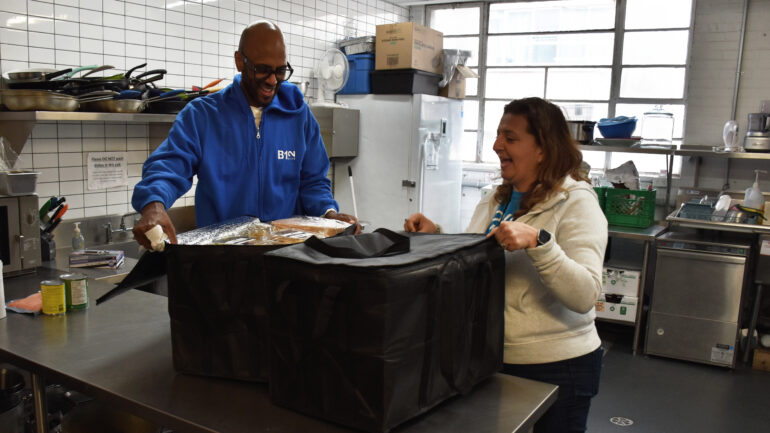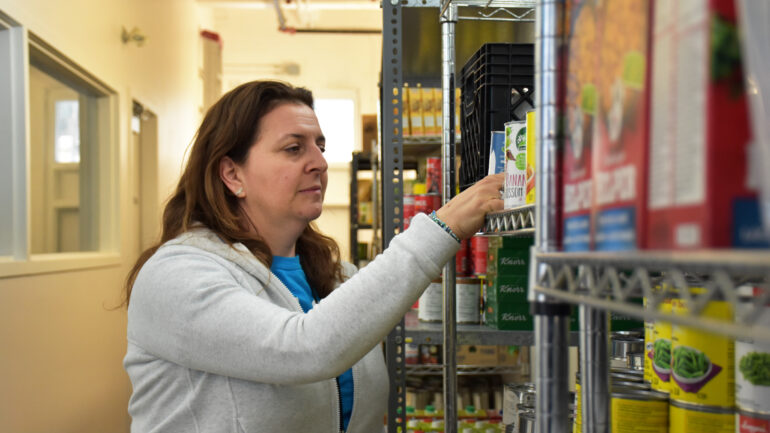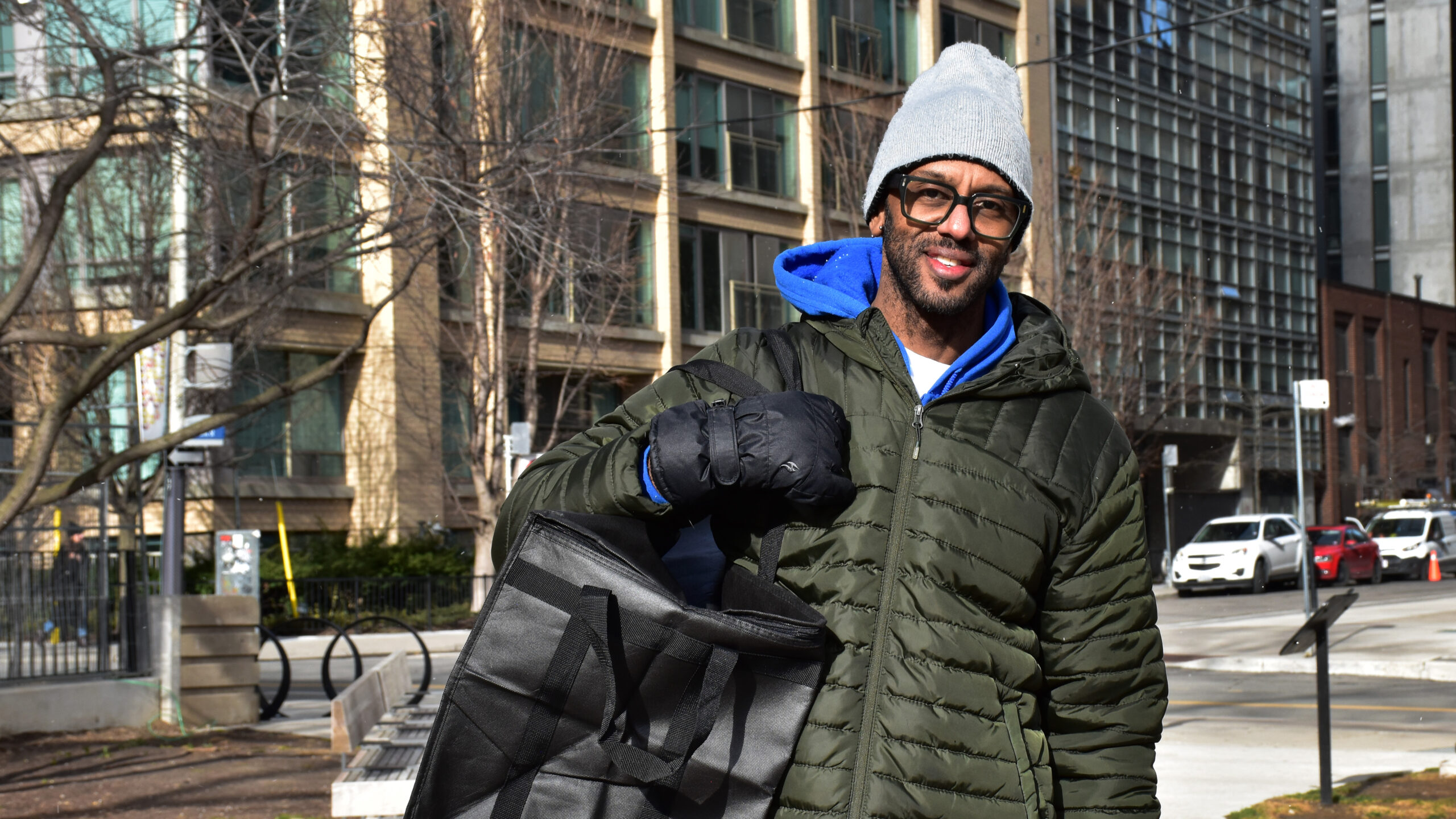When Tony Colley was 44 years old, he had already established himself as a corporate finance worker, raised funds for non-profits and ran events for AIDS awareness, all while hitting the gym every morning.
But after a series of budget cuts, the Halifax native who moved to Toronto for a bank-related job found himself unemployed and on social assistance in 2016.
“I still had to get up every day,” Colley said. “None of my friends knew I had lost everything.” He said his muscular abs masked the fact he didn’t have food in the fridge.
Colley wound up with a job in a Toronto-area catering company, where he asked if he could take surplus food for himself and others who didn’t have anything to eat. Shortly after, B12Give was born.
The food rescue app takes surplus event food from caterers, hotels and schools and immediately puts it into the kitchens of downtown charities.
It makes food accessible when more than one-third of food charities in Toronto are forced to turn people away due to high demand, according to a new survey by Second Harvest.
“We don’t have a shortage of food issue in Canada,” said Madison Maguire, the director of fleet and operations at Second Harvest.
“We just have a distribution problem where we are wasting some of that food,” Maguire said. “Then there are people who are not able to access that.”
The survey also reported nearly half of food charities say they’ll need 50 per cent or more perishable food next year to meet the demand.

From left, Tony Colley and Leanne Rabinowitz opened a bag filled with surplus food at Eva’s Initiatives’ kitchen on March 20. Colley, who suffers from yeast syndrome or candida, ensures each B12Give packaging has a label for contents and food allergens so people can enjoy the food safely. Photo credit: Annicca Albano
Leanne Rabinowitz, the food services coordinator at Eva’s Initiatives, said partnering with B12Give allows them to have a consistent ready-to-eat food source in addition to the dry goods and produce from other charities, such as Second Harvest and the Daily Bread Food Bank.
Eva’s transitional housing relies completely on donations to feed 50 homeless youth, Rabinowitz said.
“If there are long lines at the food banks, that also means maybe we get less,” Rabinowitz said.
She said new residents learn cooking skills from her to be self-sufficient when they move on and find jobs, which many are struggling to do now.
Rabinowitz, who grew up in a family of restaurateurs, said deliveries from B12Give are a delicious treat residents look forward to every Wednesday and Friday.
“Tony created this very easy system,” Rabinowitz said of the on-demand delivery app, comparing it with other food recovery initiatives that only allow store pickup — a problem for organizations with limited staff or service vehicles.
“Giving people who would not otherwise have access to that kind of food access to it? It’s wonderful,” she said.

Leanne Rabinowitz, food services coordinator at Eva’s Initiatives, browses through donated pantry items on March 20. Rabinowitz says near-expiry food is not a problem since food items are used quickly in shelter systems. Photo credit: Annicca Albano
Jill Hobbs, an agricultural economist and professor at the University of Saskatchewan, said it’s not in the interest of food retailers to throw out their products.
However, she said, companies should consider how to prevent food from being wasted in the first place.
“[Unsold goods] just adds cost and ends up being reflected in higher food prices for consumers, which exacerbates the food insecurity problems,” Hobbs said.
Tammara Soma, an assistant professor of food system planning at Simon Fraser University, said food rescuing is a good stopgap solution to hunger.
“But I disagree with the premise that this is our only solution,” Soma said.
She said the government should step up, acquiring ugly or unsellable fruits and vegetables from farms to support school food programs.
She cites the PROOF study that found one in four Canadian children under 18 lived in a food-insecure household in 2022.
“[Redistributing food that way] would be a much more dignified way to treat people,” Soma said.

Tony Colley stands behind a bike on a snowy afternoon at St. Andrew’s Playground Park on March 20. Colley uses his bike for light deliveries only, with the insulated bags hung on the handlebars. Soon, B12Give will operate with cargo bikes. Photo credit: Annicca Albano
In the meantime, Colley, now 52 years old, will continue what he says the universe chose him to do and look for partners to pursue his goal of redistributing edible food across Canada by 2030.
Unlike shops and restaurants, catering companies prepare meals for guests in advance. The unpredictability of events leads to unavoidable food waste, which is why Colley said it’s a natural fit.
He said B12Give bills clients one dollar per pound of surplus food and sends them impact reports measuring a company’s environmental and social footprint.
“I lost everything to experience what I was going to be dealing with first-hand in order to understand the complexities within it,” Colley said. “We have the solution at the right time.”

